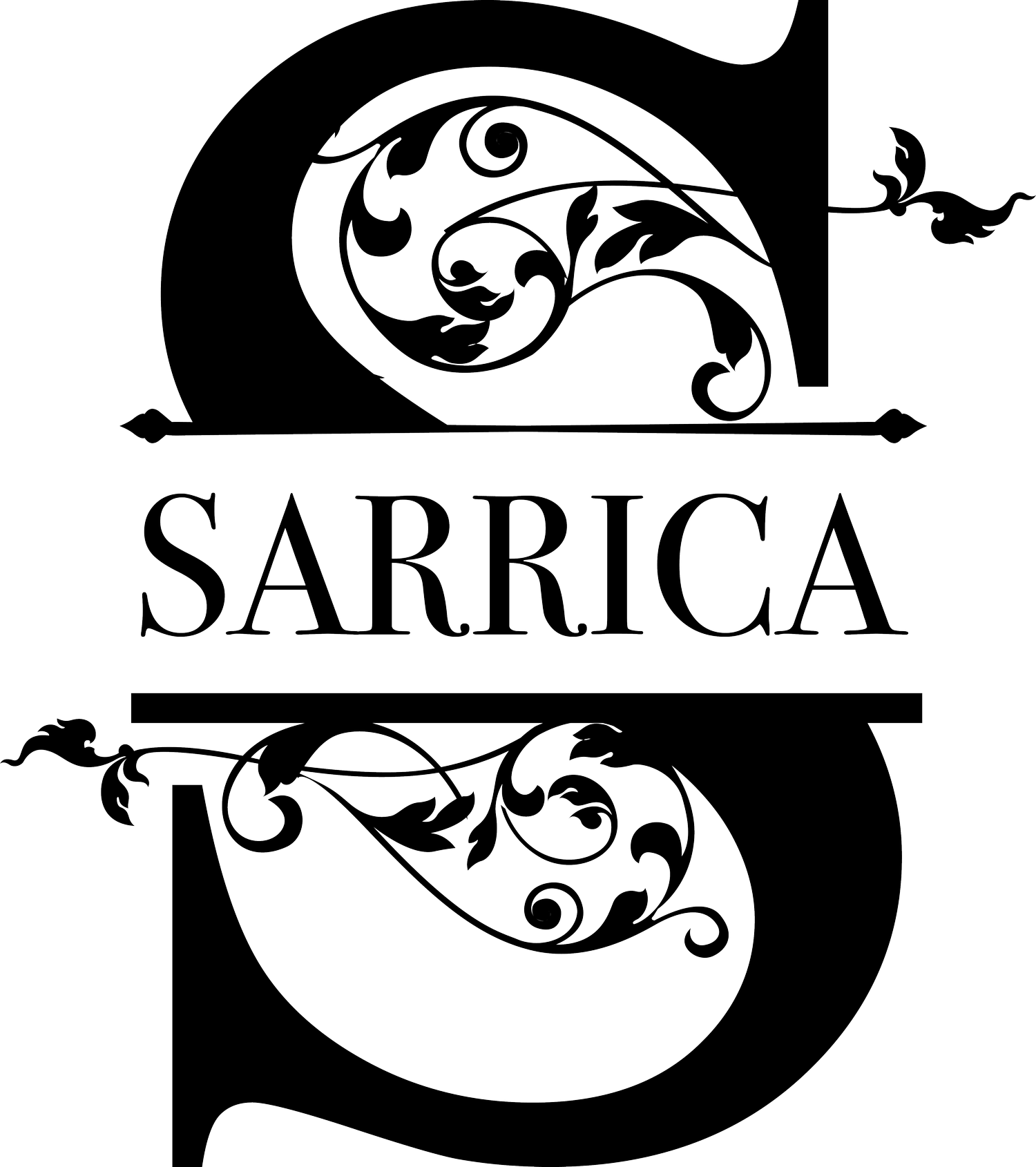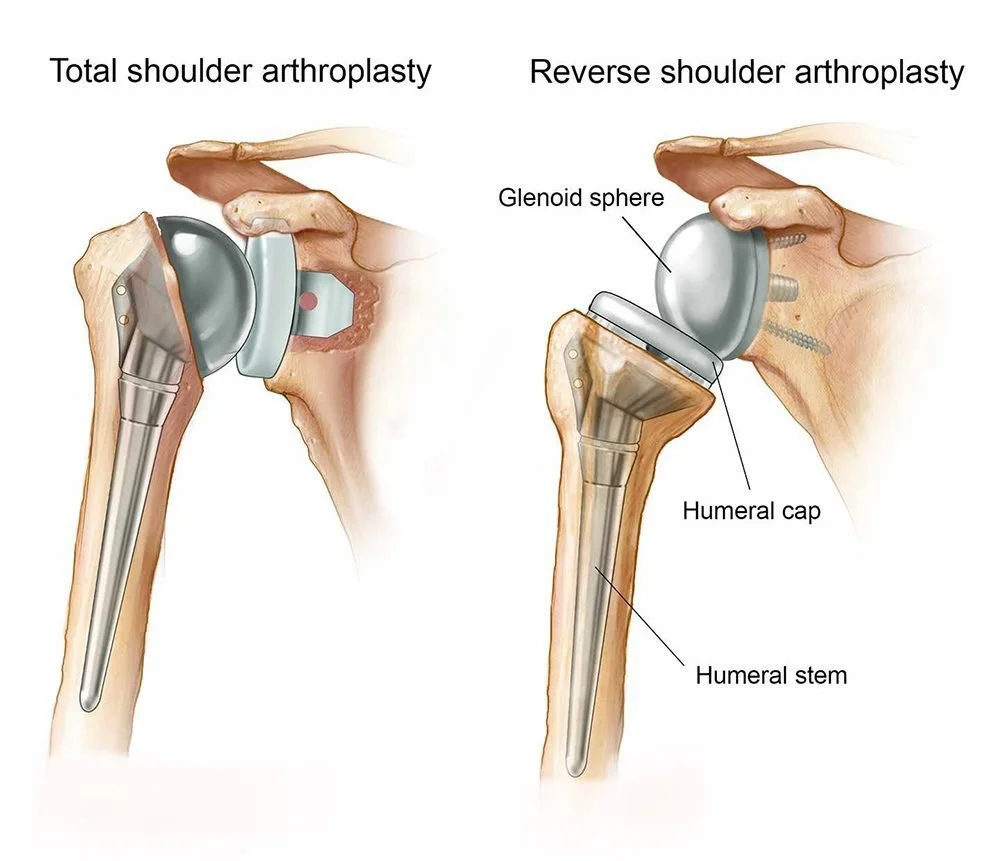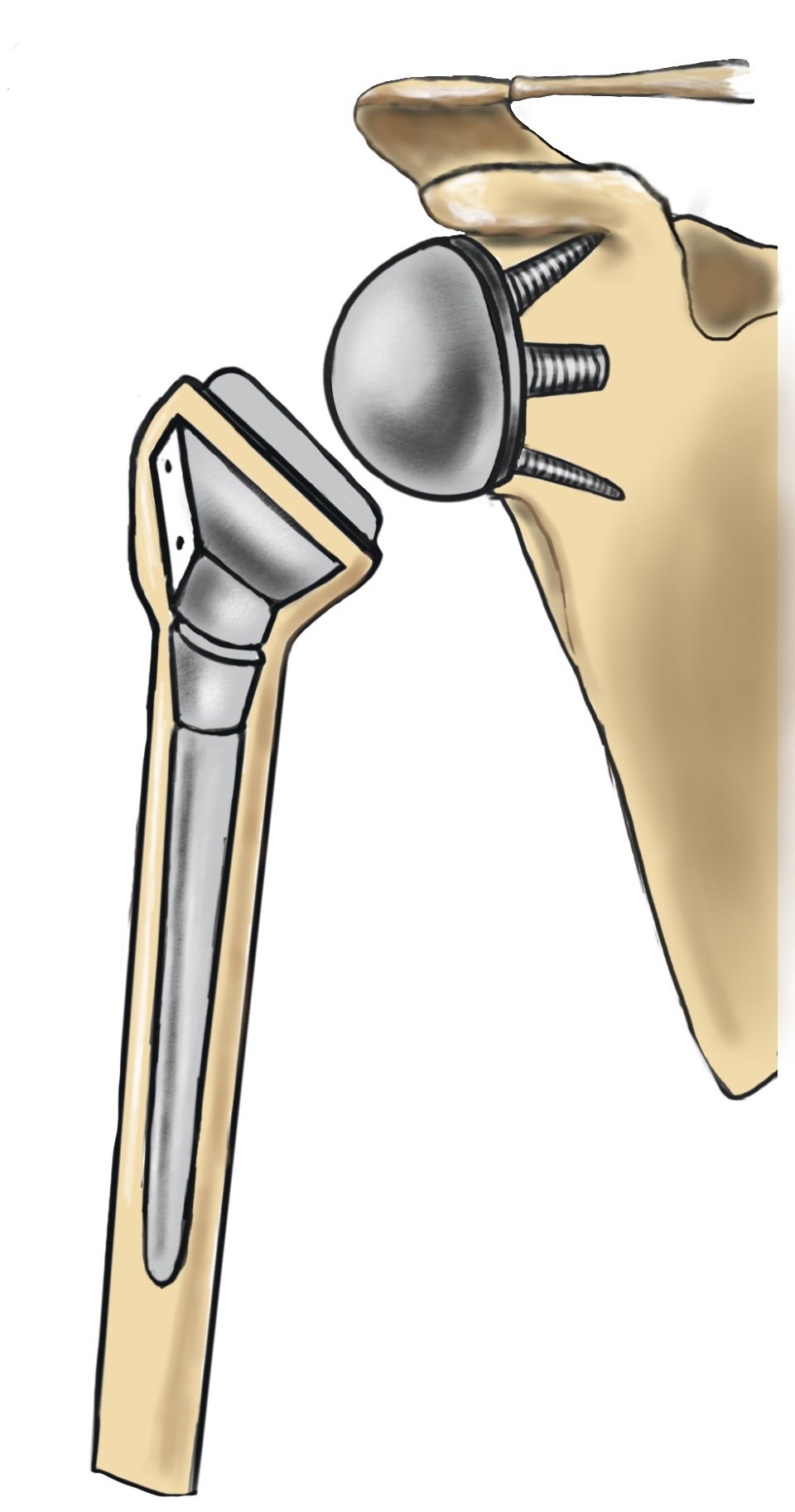Basics of The Reverse Total Shoulder Arthroplasty
What is The Reverse Total Shoulder Arthroplasty (RTSA)?
The reverse total shoulder arthroplasty (RTSA) was introduced in 1998 to the US in order to address the limitations of the total shoulder arthroplasty (TSA). More than 60,000 RTSA procedures have been performed annually in the US with satisfactory results. While total shoulder replacements have been largely successful for patients with shoulder arthritis, they are not as successful in patients with rotator cuff arthropathy.
What is Rotator Cuff Arthropathy?
Rotator Cuff Arthropathy is a form of arthritis where the patient has a large irreparable rotator cuff tear for a prolonged period of time. This eventually results in upward migration and collapse of the humeral head.
RTSA is also a viable option for patients with:
acute proximal humerus fractures
post-traumatic GH arthritis
chronic irreducible shoulder dislocation
revision surgery for failed ATSA
revision surgery for failed proximal humerus hemiarthroplasty
inflammatory joint conditions (ie, rheumatoid arthritis)
Understanding The TSA vs The RTSA
The total shoulder arthroplasty (TSA) consists of a concave glenoid socket and convex proximal humeral ball prosthesis, which is similar to the anatomy of the natural shoulder.
The RTSA features the anatomy in reverse; a convex glenoid ball and concave proximal humerus.
The main biomechanical advantage of the RTSA is that the center of rotation is displaced medially and inferiorly, allowing the deltoid to take over as the main shoulder elevator due to the longer lever arm creating a mechanical advantage. The downward displacement of the humerus also increases deltoid muscle tension.
What is Reverse Total Shoulder Arthroplasty Recovery Time?
The recovery time after RTSA surgery includes:
Hospital stay for one night
Use of sling for 6 weeks
Return to basic function in 3 months
Return to normal function in 6-12 months
(Individual recovery may vary due to other factors).
What are the advantages and limitations of Reverse Total Shoulder Arthroplasty?
Advantages of the RTSA include:
Significant reduction in shoulder pain
Functional range of motion of the shoulder
Survival rate of the replacement is 85-90% 10 years after the procedure
Limitations of the RTSA include:
15-25% chance of surgical complications
Restricted range of motion in reaching behind the back, usually to the back pocket. -Strength level will be 50-75% of a normal shoulder (due to lack of rotator cuff strength) that should be built up slowly over time.
Restriction from lifting over 25 lbs overhead after recovery from this procedure -High-impact sports and heavy lifting should be avoided.
Shoulder shape will change slightly due to lengthening of the deltoid, which gives a slightly flatter appearance.
Most patients can return to many activities and sports they enjoy (pickleball, tennis, swimming, weight lifting, skiing, hunting) with some modifications in how they move. Caution should be taken to prevent falling onto the shoulder as this could result in a serious fracture around the prosthesis
If you or someone you know is recovering from a reverse total shoulder arthroplasty or they just want to learn more about the rehabilitation process pre/post-surgery, give Sarrica Physical Therapy & Wellness a call at our Brooklyn or Manhattan office at 347-560-6920 or request an appointment here.









